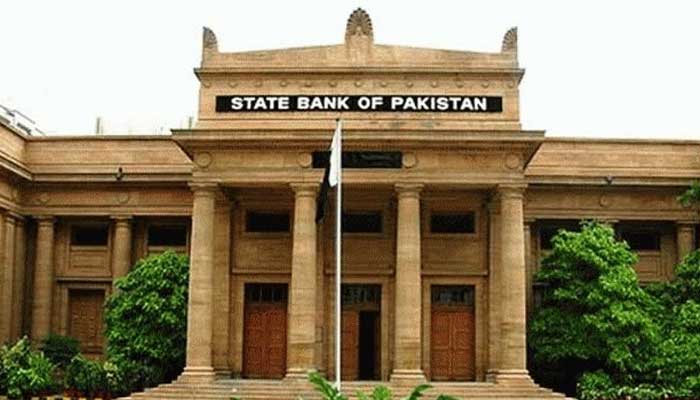Inflation doubles, to escalate
Annual consumer inflation rose 9.4 percent in March 2019 and 8.8 percent in April 2019. Average headline consumer inflation reached 7 percent in July-April FY2019 compared to 3.8 percent in the same period last year.
KARACHI: The State Bank of Pakistan (SBP) on Monday raised the benchmark interest rate by a hefty 150 basis points to eight years high of 12.25 percent from 10.75 percent in an attempt to put a floor under the tumbling currency and tame the runaway inflation in line with IMF-backed reforms to stabilise the derailed economy.
“The further policy measures are required to address underlying inflationary pressures from higher recent month-on-month headline and core inflation outturns, recent exchange rate depreciation, an elevated fiscal deficit and its increased monetisation, and potential adjustments in utility tariffs,” the SBP said in a statement.
“In this context, the MPC (monetary policy committee) decided to increase the policy rate by 150 bps (basis points) to 12.25 percent effective from 21st May 2019.”
Annual consumer inflation rose 9.4 percent in March 2019 and 8.8 percent in April 2019. Average headline consumer inflation reached 7 percent in July-April FY2019 compared to 3.8 percent in the same period last year.
“Average headline CPI (consumer price index) inflation is expected to be in the range of 6.5-7.5 percent in FY19 and it is anticipated to be considerably higher in FY20,” the SBP said.
“This inflation outlook is subject to a number of upside risks from an expected rationalisation of taxes in the upcoming budget, potential adjustments in electricity and gas tariffs, and volatility in international oil prices. The inflation outlook suggests a fall in real interest rates on a forward looking basis.”
The SBP has raised its key policy rate by 6.50 percentage points since January 2018 and the latest was the sixth increase in the policy rate so far in the current fiscal year.
The rate hike beat the market expectations.
The latest monetary policy decision announced after the government reached a preliminary staff-level agreement last week with the IMF for 39 months’ long extended fund facility of around $6 billion.
The SBP said the IMF programme is designed to restore macroeconomic stability and support sustainable economic growth, “and is expected to unlock considerable additional external financing”. The yet-to-be approved loan programme is linked for prior actions to introduce economic stability and free-floating exchange rate.
Rupee lost 5.93 percent to Rs149.65 against the dollar on Monday, “reflecting a combination of underlying macroeconomic factors and market sentiment considerations,” the SBP said.
The SBP said economic growth is expected to slow in FY2019, but rise modestly in FY20.
“This slowdown is mostly due to lower growth in agriculture and industry. More than two-thirds of real GDP growth in FY19 is expected to come from services,” the central bank said.
“Going forward, some gradual recovery in economic activity is expected on the back of improved market sentiment in the context of the IMF supported program, a rebound in the agriculture sector and government incentives for export-oriented industries.”
The SBP said the overall fiscal deficit is likely to be considerably higher during the first nine months of FY2019 as compared to the same period last year due to a shortfall in revenue collection, higher than budgeted interest payments and security related expenditures.
“A greater reliance on central bank financing of the deficit has acted to dilute the impact of previous monetary tightening.”
The SBP said the current account deficit narrowed to $9.6 billion in July-March FY2019 as compared to a deficit of $13.6 billion during the same period last year, a fall of 29 percent.
“The reduction is mainly driven by import compression and a healthy growth in workers’ remittances,” it said. “This impact was partially offset by higher international oil prices.”
The SBP said non-oil trade deficit declined to $11 billion in July-March FY2019 from $13.7 billion in the corresponding period a year earlier, “reflecting the impact of stabilisation policies implemented so far”.
“Recent indicators suggest export volumes have begun to grow although total export receipts have not grown due unfavorable prices,” it added.
It said that foreign reserves declined to $8.8b as of May 10 from $10.5b at end-March 2019. "The exchange rate also came under pressure in the last few days. In SBP’s view, the recent movement in the exchange rate reflects the continuing resolution of accumulated imbalances of the past and some role of supply and demand factors."
The top bank noted that the current level of foreign reserves was below standard adequacy levels and sufficient for only three months of imports cover.
The SBP report mentioned that the overall fiscal deficit was likely to be considerably higher during Jul-Mar FY19 as compared to the same period last year due to a shortfall in revenue collection, higher than budgeted interest payments and security related expenditures.
"From a monetary policy perspective, a growing portion of the fiscal deficit has been financed through borrowings from the SBP. In absolute terms, the government borrowed Rs4.8 trillion from the central bank during July 1 to May 10 period of the FY19, which is 2.4 times the borrowing during the same period last year."
A major portion of borrowing from the SBP (Rs3.7tr) reflects a shift away from commercial banks which were reluctant to lend to the government at prevailing rates. The resulting increase in monetisation of the deficit has added to inflationary pressures.
-
 Ari Emanuel Makes A Decision Regarding His Memoir Alongside Prince Harry’s Ghostwriter
Ari Emanuel Makes A Decision Regarding His Memoir Alongside Prince Harry’s Ghostwriter -
 Buckingham Palace Gives The Spotlight To The Duke And Duchess Of Edinburgh: Video
Buckingham Palace Gives The Spotlight To The Duke And Duchess Of Edinburgh: Video -
 Eva Mendes Revisits Year She Hid Pregnancy
Eva Mendes Revisits Year She Hid Pregnancy -
 Andrew’s Eviction Marks: ‘the End Of Grifting’: ‘It A Catastrophic Fall From Grace’
Andrew’s Eviction Marks: ‘the End Of Grifting’: ‘It A Catastrophic Fall From Grace’ -
 ASAP Rocky Disses Rihanna's Ex Drake In New Track
ASAP Rocky Disses Rihanna's Ex Drake In New Track -
 Jennifer Aniston, Jim Curtis Face One Major Hurdle In Their Union
Jennifer Aniston, Jim Curtis Face One Major Hurdle In Their Union -
 Restaurant Workers Detained After ICE Agents Dine At Minnesota Eatery
Restaurant Workers Detained After ICE Agents Dine At Minnesota Eatery -
 Kate Middleton Reveals Sport She Would Not Play With Prince George
Kate Middleton Reveals Sport She Would Not Play With Prince George -
 First Poll Since King Charles' Action Against Andrew Reveals Royal Family's Public Standing
First Poll Since King Charles' Action Against Andrew Reveals Royal Family's Public Standing -
 Blake Lively Strengthens Legal Team Ahead Of Justin Baldoni Trial
Blake Lively Strengthens Legal Team Ahead Of Justin Baldoni Trial -
 'Back To School!': Palace Shares Details Of Princess Anne's Latest Engagements
'Back To School!': Palace Shares Details Of Princess Anne's Latest Engagements -
 Paul Mescal Clarifies Acting Break Comment As He Teases Paul McCartney Role
Paul Mescal Clarifies Acting Break Comment As He Teases Paul McCartney Role -
 Kate Middleton's Unexpected Style Of Arrival At Solo Outing Goes Viral
Kate Middleton's Unexpected Style Of Arrival At Solo Outing Goes Viral -
 Why ‘X’ Is Down? Thousands Report Twitter Outage: Here’s What You Can Do
Why ‘X’ Is Down? Thousands Report Twitter Outage: Here’s What You Can Do -
 Florida Man Held After Alleged Nail-scattering On Busy Intersections
Florida Man Held After Alleged Nail-scattering On Busy Intersections -
 Valeria Nicov: Sean Penn's Athletic Girlfriend Raises Eyebrows With Latest Photos
Valeria Nicov: Sean Penn's Athletic Girlfriend Raises Eyebrows With Latest Photos




